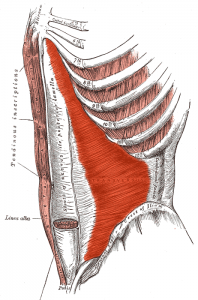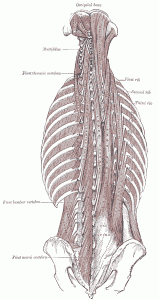The Importance of a Strong Core
Why is having a strong core so important? Aside from the six-pack abs everyone is so eager to see on themselves, having a solid core is incredibly important to your overall health.
- Stability
The muscles around your midsection can be thought of as the “base” of your body. Every time you jump, twist, turn, stand, or sit you engage the core. Having a strong and flexible core prevents injury and supports your body as you move. - Posture
Because your core stabilizes you, it also helps with your posture. Your spine isn’t doing all of the work. It has the support it needs to stand up straight. - Decreased Back Pain
This is a big one for me. When your spine has support, it takes the pressure off of the lower back. When you already have back pain, working the core muscles can be extremely difficult, but I promise it can be done. I’ll help you find exercises that won’t put more pressure on your already over-taxed back. - Breathing
Yep, those midsection muscles also help you inhale and exhale. You will breath deeper and better with a developed core, and better breathing leads to better relaxation.
These are just a few of the many benefits of having a strong core. It can be a difficult area to work, especially if you’re already suffering from back pain like I was. But I’ve found workouts that will help you strengthen those muscles without putting too much strain on your lower back. I promise it can be done!
What Are the Core Muscles?
So just what are the “core muscles” that we keep hearing about? Good question! The core is actually a group of several different muscle groups, all of which help to stabilize our bodies and help promote movement. In the December 2007 issue of “Strength and Conditioning Journal”, Jeffry Willardson describes the core as the link between the upper and lower body.
Although it’s often just thought of as the stomach, there are a few different muscle groups that make up the core.
1. First, the abdominals, or “abs”. The abs are made up of several smaller groups of muscles in and around the stomach.
The rectus abdominus is what we usually think of when we think of abs. They are the six-pack muscles, the paired muscles running down the middle of the stomach.
Next in the ab group are the transverse abdominus. It is the deepest of the major core muscles and provides pelvic stability and helps pregnant women in delivery.
The obliques run along the side of the stomach. They help with inhaling and exhaling and with rotation and side-bending.
The back muscles, or erector spinae, is a collection of paired muscles and tendons that run vertically along the spine. The back muscles play a big role in stability, and are prone to injury.
Of course this is just a basic overview. There are many, many muscles that contribute to a strong core, but these are the groups that I’ll focus on to help you achieve a strong, healthy, functional core.
References
Bowden, Brian. “What Are the Core Muscles of the Body?” LIVESTRONG.COM. 3 May 2011. Web. 05 June 2012. <http://www.livestrong.com/article/98988-core-muscles-body/>.
“Erector Spinae Muscles.” Wikipedia. Wikimedia Foundation. Web. 05 June 2012. <http://en.wikipedia.org/wiki/Erector_spinae_muscles>.
“Internal Obliques.” Wikipedia. Wikimedia Foundation. Web. 05 June 2012. <http://en.wikipedia.org/wiki/Internal_obliques>.
“Rectus Abdominis Muscle.” Wikipedia. Wikimedia Foundation. Web. 05 June 2012. <http://en.wikipedia.org/wiki/Rectus_abdominis_muscle>.
Willardson, Ph. D., Jeffry. “Core Stability Training for Healthy Athletes: A Different Paradigm for Fitness Professionals.” Strength and Conditioning Journal (2007). Print.



